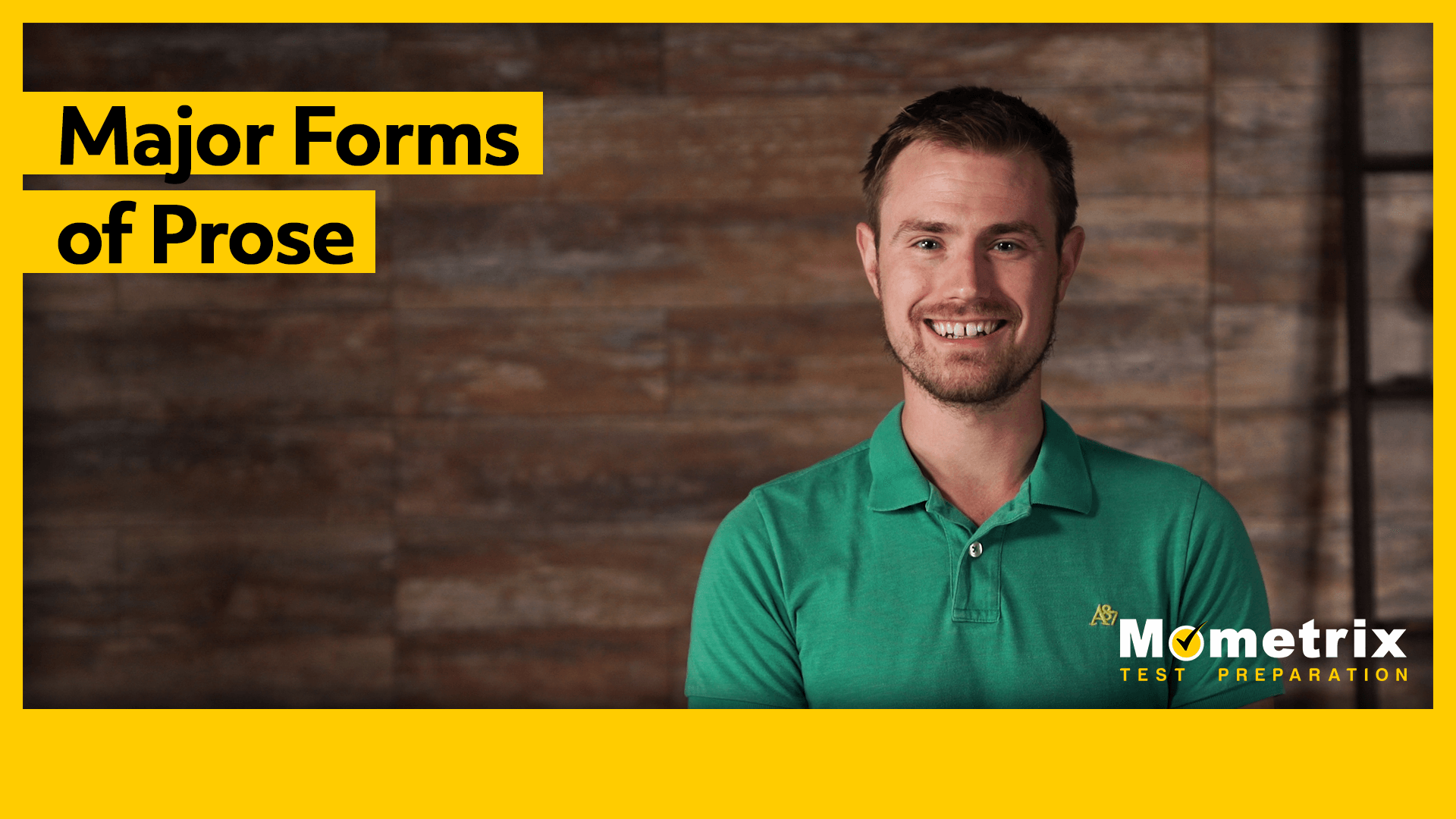
Today we’re going to be talking about the four major forms of prose in literature.
What is Prose?
Prose is a form of language that has no formal metrical structure. The opposite of prose is traditional poetry, which has rhyme and rhythm. Prose reads much like a person speaks. It makes no attempts to rhyme line to line, and it doesn’t have a rigid rhythm.
Normal everyday speech is spoken in prose, and most people think and write in prose. While poetry may have more aesthetic appeal, prose uses full grammatical sentences and focuses on clear, straightforward language.
The following excerpt from Robert Frost’s poem “Stopping by Woods on a Snowy Evening” is an excellent example of poetry:
But I have promises to keep,
And miles to go before I sleep,
And miles to go before I sleep.
The rhyming at the end of each line should signal to us right away that this is written in traditional poetic form. The poem also has rhythm, and check out the last two lines. They repeat! You wouldn’t ordinarily find such exact repetition in prose.
If this same sentiment were written in prose it would sound something like this:
As you can see, there are no rhyming lines and no real rhythm—just normal, conversational prose.
Now that you have a firm grasp on what prose is, let’s take a closer look at the four main types of literary prose.
The Four Types of Prose
Nonfictional Prose
The first is nonfictional prose. This is prose that is mainly based on fact. Think about biographies and essays. The writer is trying to teach or document something that happened in real life, and they use conversational prose to do this. In Ron Chernow’s biography on Ulysses S. Grant, we see an example of this kind of prose:
As you can see, Chernow is writing based on historic facts. He used letters and records from that time to inform his writing. In the first sentence, we see that Grant “would not be easily discouraged.” The author is making an assumption about Grant’s attitude and emotions at this time, but he is doing so based on the historical evidence he has on hand. Therefore, though nonfiction prose may at times contain slight fictional elements, in general, the piece has real-world information.
Fictional Prose
The second type of prose is fictional prose. This is prose that is wholly or partly imagined. Novels are written in fictional prose, as are most fairy tales. Some of the greatest literary works of all time were written in fictional prose. Les Miserables, A Tale of Two Cities, The Adventures of Huckleberry Finn, and countless others were all tales concocted in the mind of their author. Fiction can sometimes be based on truth, but the events and conversations are made up, for the most part, by the author.
Heroic Prose
Heroic prose is common in many legends and tall tales and may be written down or recited out loud. Think about the legend of King Arthur. Tales about the knights of the round table have been around for a very long time. They were retold in ancient Britain, and are likely based on a legendary British leader who, according to medieval histories, defended against Saxon invaders in the late 5th and early 6th centuries.
For a long time, the tales of King Arthur were passed down from generation to generation by word of mouth. Minstrels sung songs, men spoke of them at festivals and in pubs. The stories changed over time, and when someone finally wrote them down these legends appeared in heroic prose.
Prose Poetry
Remember, prose contains narrative and doesn’t follow a set rhythm, while poetry is rhythmic and image-based. Prose poetry simply combines these two elements into a single piece of writing. It is poetry that is not written in verse and contains other poetic attributes, such as rhythm and metaphors. Let’s take a look at a portion of a prose poem written by Charles Baudelaire titled “Be Drunk.”
But on what? Wine, poetry or virtue, as you wish. But be drunk.
This is clearly prose. There’s no rhyming or specific rhythm in the piece. Still, look at the vibrancy of the imagery: Baudelaire begins with a startling thought, and then with a few sentences you learn he’s not necessarily talking about alcohol at all. He’s calling people to not waste the time that they have and to be fully devoted to whatever holds their passion. To do this, the poet uses metaphors, imagery, and literary allusion. It’s poetic, even though it’s written in prose.
In summary, prose comes mainly in nonfiction, fiction, heroic, or poetic form. Understanding the nuances of each of these can help you widen your own experience, and further appreciate what you are reading.
Thanks for watching, and as always, happy studying!

